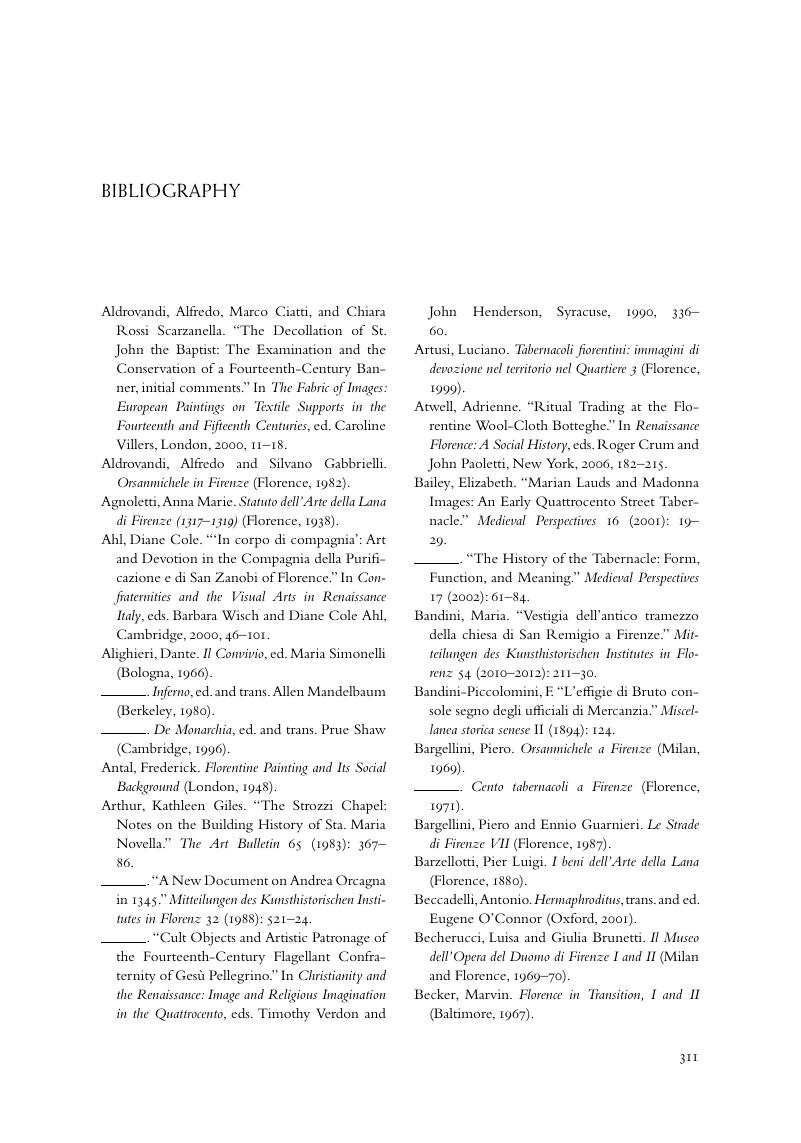Book contents
- Public Painting and Visual Culture in Early Republican Florence
- Public Painting and Visual Culture in Early Republican Florence
- Copyright page
- Contents
- Illustrations
- Acknowledgments
- Maps
- Frontispiece
- Introduction: Public Painting and Visual Culture in Early Republican Florence, 1282–1434
- Chapter One Paintings in the Streets: Tabernacles, Public Devotion, and Control
- Chapter Two Images of Charity: Confraternities, Hospitals, and Pictures for the Destitute
- Chapter Three Art and the Commune: Politics, Propaganda, and the Bureaucratic State
- Chapter Four Pictures for Merchants: The Guilds, Their Paintings, and the Struggle for Power
- Chapter Five Public Painting in Sacred Spaces: Piers and Pilasters in Florentine Churches
- Chapter Six Murals for the Masses: Paintings on Nave Walls
- Chapter Seven Masaccio's Trinity and the Triumph of Public Painting for Common People in Early Republican Florence
- Notes
- Bibliography
- Index
- Plate section
- References
Bibliography
Published online by Cambridge University Press: 20 January 2017
- Public Painting and Visual Culture in Early Republican Florence
- Public Painting and Visual Culture in Early Republican Florence
- Copyright page
- Contents
- Illustrations
- Acknowledgments
- Maps
- Frontispiece
- Introduction: Public Painting and Visual Culture in Early Republican Florence, 1282–1434
- Chapter One Paintings in the Streets: Tabernacles, Public Devotion, and Control
- Chapter Two Images of Charity: Confraternities, Hospitals, and Pictures for the Destitute
- Chapter Three Art and the Commune: Politics, Propaganda, and the Bureaucratic State
- Chapter Four Pictures for Merchants: The Guilds, Their Paintings, and the Struggle for Power
- Chapter Five Public Painting in Sacred Spaces: Piers and Pilasters in Florentine Churches
- Chapter Six Murals for the Masses: Paintings on Nave Walls
- Chapter Seven Masaccio's Trinity and the Triumph of Public Painting for Common People in Early Republican Florence
- Notes
- Bibliography
- Index
- Plate section
- References
Summary

- Type
- Chapter
- Information
- Public Painting and Visual Culture in Early Republican Florence , pp. 311 - 324Publisher: Cambridge University PressPrint publication year: 2017



